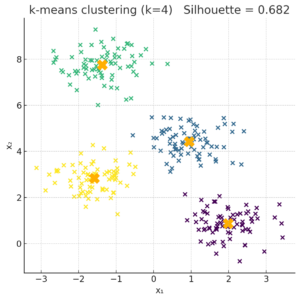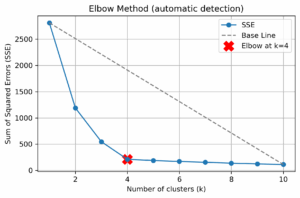動脈硬化に関する論文
- Advances in Quantitative Analysis of 18F-Sodium Fluoride Coronary Imaging Jacek Kwiecinski 1,2, Martin Lyngby Lassen 1, Piotr J Slomka Mol Imaging. 2021 Jan 15;2021:8849429. doi: 10.1155/2021/8849429
- A prospective natural-history study of coronary atherosclerosis Gregg W Stone 1, Akiko Maehara, Alexandra J Lansky, Bernard de Bruyne, Ecaterina Cristea, Gary S Mintz, Roxana Mehran, John McPherson, Naim Farhat, Steven P Marso, Helen Parise, Barry Templin, Roseann White, Zhen Zhang, Patrick W Serruys; PROSPECT Investigators N Engl J Med . 2011 Jan 20;364(3):226-35. doi: 10.1056/NEJMoa1002358. https://www.nejm.org/doi/10.1056/NEJMoa1002358?url_ver=Z39.88-2003&rfr_id=ori:rid:crossref.org&rfr_dat=cr_pub%20%200www.ncbi.nlm.nih.gov
- Pathology of the vulnerable plaque Renu Virmani 1, Allen P Burke, Andrew Farb, Frank D Kolodgie J Am Coll Cardiol . 2006 Apr 18;47(8 Suppl):C13-8. doi: 10.1016/j.jacc.2005.10.065. https://pubmed.ncbi.nlm.nih.gov/16631505/
そもそも動脈の構造について
下の動画は非常に理路整然と説明していて、わかりやすい。やはり、理解の前に前提となる知識を整理して臨むことが大事。
Atherosclerosis | Pathogenesis and Morphology | Learn by animation Medical Snippet チャンネル登録者数 4.45万人
- tunica intima (内膜)、 tunica media (中膜)、tunica adventitia(外膜)
Atherosclerosis 動脈硬化 とは?
下の動画が、非常に聞きやすく(英語の発音が)、説明も分かりやすいです。
Medical School Pathology: The Pathophysiology of Atherosclerosis PathologyCentral チャンネル登録者数 5090人 動画時間 29:49
- 5:35~ 動脈硬化を示す血管の断面の写真の説明
- 6:20~ 動脈硬化の病理学的な説明 ロビンス病理学からの模式図が参照されていました。
Atherosclerosis Imaging in Real time Radiology Video – radiology made esay チャンネル登録者数 12万人
- 3:33 Atherrosclerosis is a tumor
- 4:08 微小血管が動脈硬化巣内に入り込む
動脈硬化は腫瘍???
No, atherosclerosis is not a tumor.
Here’s the difference:
| Term | What it is | Cause | Nature |
|---|---|---|---|
| Atherosclerosis | A disease of the arteries | Buildup of fatty plaques (cholesterol, immune cells, etc.) in the arterial walls | Inflammatory and degenerative, not a neoplasm |
| Tumor (or neoplasm) | An abnormal growth of cells | Uncontrolled cell proliferation | Can be benign or malignant (cancer) |
Key points:
- Atherosclerosis involves plaque formation, not uncontrolled cell growth.
- Tumors involve proliferating cells, often forming masses due to genetic mutations.
- While inflammation and cell proliferation occur in both, their mechanisms and outcomes are very different.
(ChatGPT 4o)
- Atherosclerosis is a tumor-like disease: study April 30, 2024 An anticancer drug blunted atherosclerosis progression — and even made plaques shrink — in a mouse model of the disease, opening new opportunities for preventing and treating this leading cause of death. https://news.vumc.org/2024/04/30/atherosclerosis-is-a-tumor-like-disease-study/
- Atherosclerosis Is a Smooth Muscle Cell–Driven Tumor-Like Disease Published 30 April 2024 https://www.ahajournals.org/doi/10.1161/CIRCULATIONAHA.123.067587 本文無料
- A Common Mechanism for Cancer Metastasis and Atherosclerosis Research Press Release | July 25, 2022 https://www.global.hokudai.ac.jp/blog/a-common-mechanism-for-cancer-metastasis-and-atherosclerosis/
粥状(じゅくじょう)動脈硬化の石灰化
。ヒドロキシアパタイトは、骨や歯にも含まれる無機物で、動脈硬化が進行しプラークが肥厚・硬化する過程で形成される「石灰化」と呼ばれる現象の一部として確認されます。
粥状動脈硬化プラークの形成と石灰化
- プラークの形成: 動脈の内膜に悪玉コレステロール(LDL)などが蓄積し、粥状のプラークが形成されます。
- プラークの進行と石灰化: このプラークが進行すると、やがて石灰化と呼ばれる過程が起こります。
- ヒドロキシアパタイトの沈着: プラークが石灰化する際、石灰成分の一つとしてヒドロキシアパタイトが沈着することが知られています。
ヒドロキシアパタイトとは
-
- ヒドロキシアパタイトは、リン酸カルシウムの一種であり、人間の骨や歯の主成分としても知られています。
- 動脈硬化のプラークにおいては、石灰化したプラークの一部を構成する成分の一つです。
したがって、「粥状動脈硬化プラーク」と「ヒドロキシアパタイト」は、動脈硬化の病変(プラーク)が進行する過程で、石灰化という現象が起き、その一部としてヒドロキシアパタイトという成分が沈着するという関連性があると言えます。
- 動脈硬化プラーク:血管にできるコレステロールなどが蓄積した「かたまり」です。
- 石灰化:動脈硬化が進行したプラークや血管の壁に、血液中のカルシウムなどが沈着して硬くなる状態です。
- ヒドロキシアパタイト:カルシウムとリン酸からなる物質で、骨にも含まれる成分です。動脈硬化プラークが石灰化する際、このヒドロキシアパタイトが主成分の一つとして沈着します。
まとめ
ざっくり言うと「はい、でも二択ではなく“連続体”です」。
要点
- 柔らかい段階(脆弱プラーク / vulnerable plaque)
- 中身:脂質に富む壊死コア、泡沫細胞、強い炎症、微小石灰化
- 形態:薄い線維性被帽、陽性リモデリング(外側に広がって狭窄は目立たないことも)
- リスク:破綻しやすく、急性冠症候群の原因になりやすい
- 画像のヒント:CTで低吸収(低HU)、OCTで薄被帽脂質性プラーク(TCFA)など
- 硬い段階(安定プラーク / stable plaque)
- 中身:線維化が進み、粗大石灰化が増える
- 形態:厚い線維性被帽、負性リモデリング(内腔が狭くなる)
- リスク:破綻は起こりにくいが、固定性狭窄で労作狭心症の原因に
- 例外:石灰化結節は硬くても破綻源になり得る
もう少し踏み込むと
- 同じ病変の中に「柔らかい部分」と「硬い部分」が同時に混在することは珍しくありません。
- **微小石灰化(活動中の石灰化)**は被帽の応力を高めて破綻リスクに関与、**粗大石灰化(成熟)**はむしろ安定化に寄与しやすい、という傾向があります。
- スタチンなどの治療は、脂質コアを減らし被帽を厚くして**“柔→硬(安定化)”にシフト**させる一方で、CTの石灰化スコアが増えることもあります(“硬くなる=悪化”ではない)。
まとめ(実務感)
- 「ブヨブヨ=危険、カチカチ=安全」は概ね正しいが単純化しすぎ。
- リスク評価は、被帽の厚さ・炎症・出血・石灰化のタイプ(微小か粗大か)など組成ベースで行うのが基本です。
了解。主要モダリティごとの「柔らかい(脆弱)」vs「硬い(安定)」所見をひと目で分かる形でまとめました。
| モダリティ | 柔らかい(脆弱)所見 | 硬い(安定)所見 | 補足・限界 |
|---|---|---|---|
| 超音波(頸動脈など) | 低エコー/混合エコー、表面不整・潰瘍、GSM低値、juxtaluminal black area(内腔直下の低エコー帯)、可動性成分;造影USでプラーク内微小血流(新生血管) | 高エコー均一、粗大石灰化による音響陰影、表面平滑・均質 | 簡便・非侵襲。石灰化強いと内部評価が難。GSM閾値は施設差あり(目安:低値≲25–32)。 |
| CT(CCTA/頸動脈CT) | 低吸収プラーク(平均HU低値:特に<30 HUで脂質・壊死コア示唆)、陽性リモデリング(RI>1.1)、ナプキンリングサイン、スポッティ石灰化(小・散在、弧<90°)、プラーク負荷大 | 線維性高吸収、びまん性・板状の粗大石灰化、負性リモデリング、輪郭平滑 | 冠動脈リスクの構成評価に有用。カルシウム大量だとアーチファクトで定量困難。HUの閾値は機種・条件で変動。 |
| IVUS | 低輝度プラーク、陽性リモデリング、attenuated plaque(カルシウムなしの強い後方減衰)、(VH-IVUSで)TCFA様(necrotic coreが内腔寄り)※被帽厚は直接測れない | 高輝度石灰化+広い音響陰影、均一高輝度の線維性プラーク、負性リモデリング | 壁全層の観察に強いが**解像度(~100–150 μm)**のため薄被帽は不可視。強石灰化で後方不明瞭。 |
| OCT | 薄い線維性被帽(<65 μm=TCFA)、脂質プラーク(低信号+不明瞭境界)、マクロファージ(点状高輝度)、プラーク内出血・微小破綻、微小石灰化、コレステロール結晶 | 線維性プラーク(高信号・均一)、石灰化(境界明瞭な低信号塊)±後方陰影、厚い被帽、石灰化結節は不整突出として描出 | **最高解像度(~10–20 μm)**で被帽評価に最適。造影で血液置換が必要、深部は減衰で見えにくい。 |
使い分けの実務感
- **“柔らかい=脂質・炎症・出血・微小石灰化、薄い被帽”**を直接見たいなら OCT。
- 全体の負荷・高危険所見のスクリーニングは CT。
- 壁全層とリモデリング評価は IVUS、ベッドサイド評価・追跡は **超音波(+造影)**が得意。
ヒドロキシアパタイトへのNaFの取り込み
。ヒドロキシアパタイト(Ha)は歯や骨の主成分ですが、NaFによって形成されるフルオロアパタイトはより耐酸性が高いため、フッ化ナトリウムは歯の健康に不可欠な成分です。
- フッ化物イオンの放出: 口腔内でNaFはフッ化物イオン(F⁻)を生成します。
- フルオロアパタイトの生成: このフッ化物イオンが、歯のエナメル質を構成するヒドロキシアパタイトのOH基と置き換わり、より酸に強いフルオロアパタイトを生成します。
- 弱結合性フッ化物の形成: ヒドロキシアパタイトとの反応でフッ化カルシウム(CaF₂)が生成され、これはフッ化物イオンの貯蔵庫として機能し、虫歯予防に貢献します。
ヒドロキシアパタイト(Ha)とNaFの連携
-
- 共生的な関係: ヒドロキシアパタイトは本来の歯の成分ですが、フルオロアパタイトにすることで耐酸性が向上し、虫歯になりにくくなります。NaFは、このヒドロキシアパタイトを強化する役割を果たします。
- フッ化物歯磨き粉での併用: フッ化物(NaFなど)とヒドロキシアパタイトは、どちらも歯を強くする効果があり、それぞれ異なる作用で歯に働きかけます。そのため、フッ化ナトリウムを配合した歯磨き粉で歯の表面を強化し、その後ヒドロキシアパタイトを配合したペーストを使用することで、より効果的な歯の健康維持が期待できます。
このように、NaFはヒドロキシアパタイトの化学構造をフッ素で強化し、歯の健康を維持する上で重要な役割を担っています。
8F-NaF/PET
PET用骨転移診断剤:フッ化ナトリウム(F-18)注射液:フッ素イオンは、骨組織の構成成分であるhydroxyapatiteに結合する性質を有する。18F-フッ化ナトリウム(18F-NaF)注射液は、ポジトロン放出核種である18F-フッ素イオンを有効成分として含み、がんの骨転移など骨疾患の画像診断に利用される。18F-NaF/PETによる画像は、従来の99mTc-MDPとガンマカメラによる骨シンチグラムより優れたコントラスト・空間分解能を持ち、従って診断精度が高い。我国では、18F-NaF/PETは医薬品として未承認のため、日常診療には利用されていないが、今後PET装置の普及に伴って注目される診断剤になると考えられる。2003/12/30 鷲野 弘明 https://rada.or.jp/database/home4/normal/ht-docs/member/synopsis/030259.html
http://kkse-nm.kenkyuukai.jp/images/sys%5Cinformation%5C20110329104649-F5D00E931FE055FA2AC297447FBD5113AFA1C11D21CE0D732C842559DE8A8525.pdf


